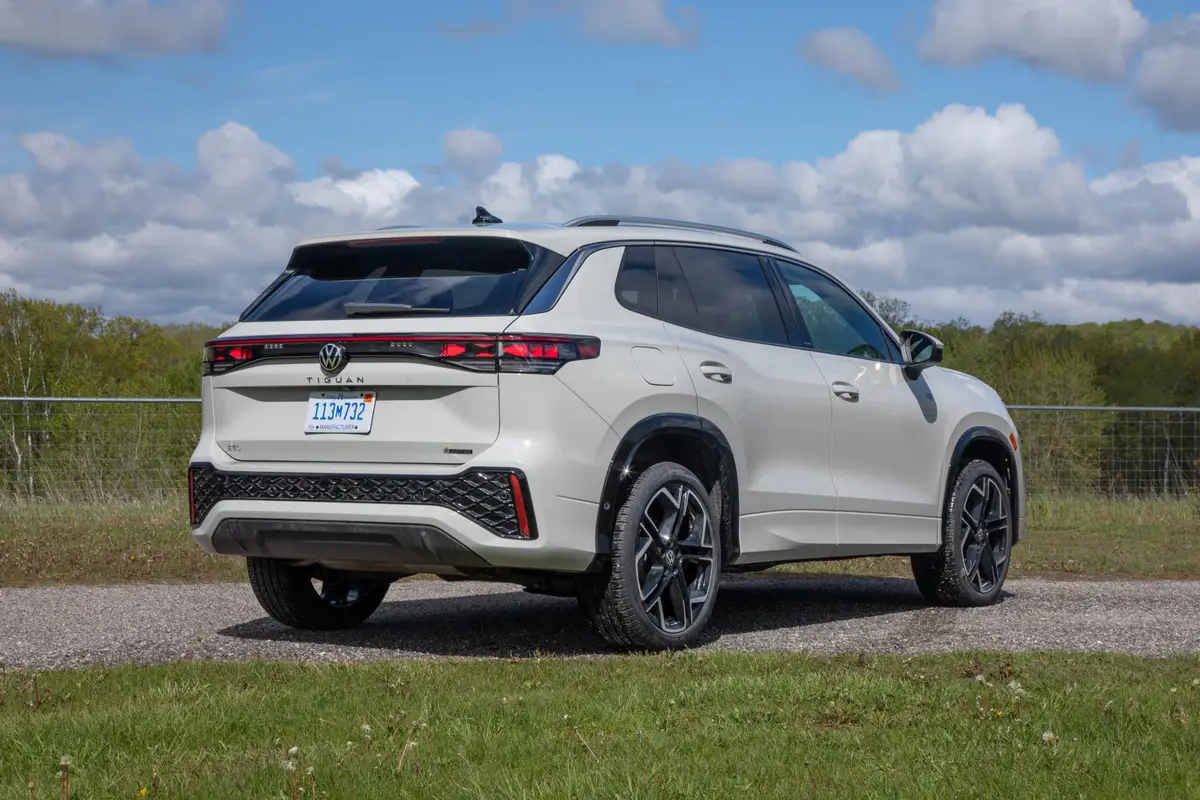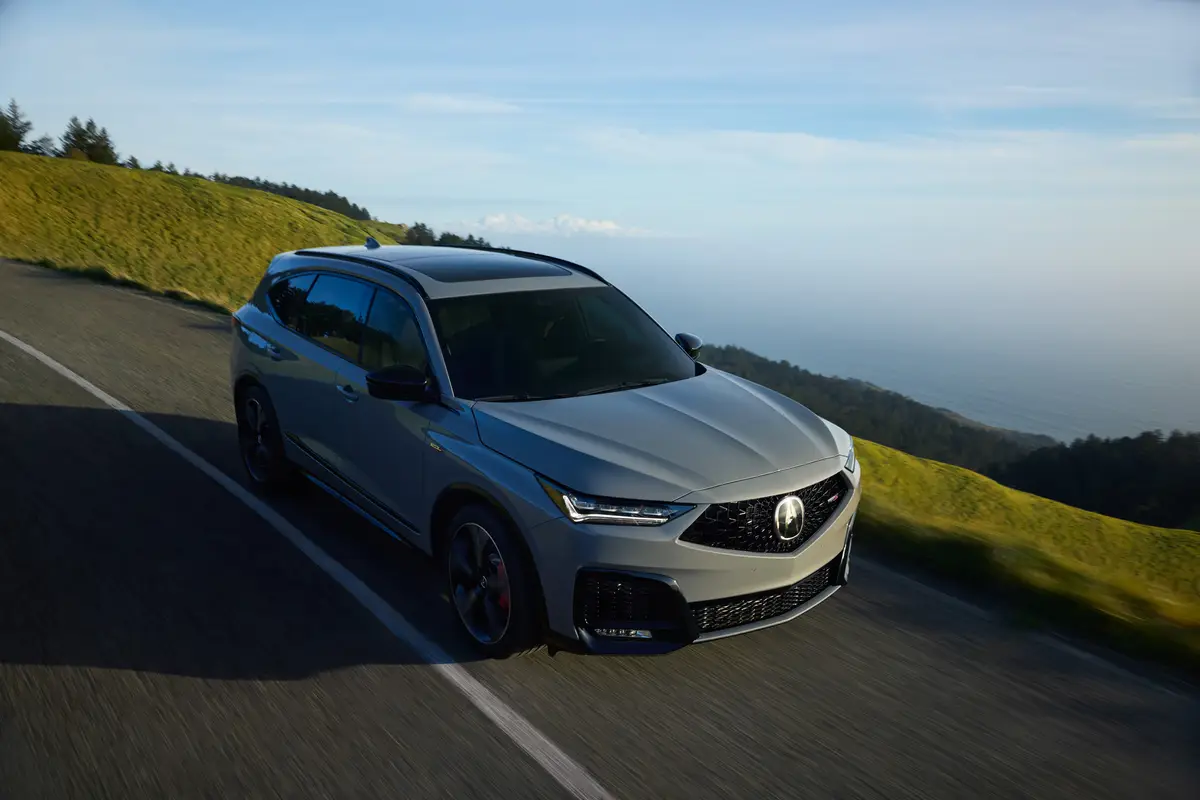chicagotribune.com's view
Good things come to those who wait.
Bigger things, too. And more powerful things.
The 1998 Dodge Durango, the newest entry in the burgeoning compactsport-utility vehicle market, is a prime example.
Durango, a wonderful name, is larger than either of its closest rivals, theChevrolet Blazer and Ford Explorer, and only a little smaller than big boyssuch as the Chevy Tahoe.
Durango seats four adults in comfort, six in moderate comfort, eight in …well, though the vehicle boasts it holds eight because it offers an optional third seat (which neither Blazer nor Explorer does), those last two passengersmay want to consider the bus if traveling a long distance. If transportingkids, eight is no chore.
And Durango offers more powerful engines for those who need totow–5.2-liter, 230-horsepower and 5.9-liter, 245-h.p. V-8s in addition to a3.9-liter, 175-h.p. V-6 for those who don’t need to tow but would like to passthe fuel pump without having to stop and say howdy.
Explorer offers a standard 4-liter, 160-h.p. V-6 and optional 4-liter,205-h.p. V-8; Blazer a 4.3-liter, 190-h.p. V-6 only.
Durango may be strong on name, looks, room, comfort, cargo-carrying,towing, ride/handling and power, but it falls short in fuel economy. The V-6is standard but won’t appear until midyear. It’s rated at a tolerable 16 milesper gallon city/20 m.p.g. highway, but the 5.2 is rated at 13/17 and the 5.9at 12/17. Little wonder Durango carries a 25-gallon fuel tank. You’ll needeach drop.
At the outset of the model run, you can get only the 5.2 or 5.9 V-8. The5.2 runs $590 in the base SLT but is standard on the dolled-up SLT Plus. The5.9 is a $295 option on the SLT Plus, not available on the SLT. No decal orbadge other than “Magnum V-8” identifies your choice.
In testing Durango here, we found the 5.2 had plenty of power versus thelarger and less fuel-efficient 5.9. The 5.9 excels in hill climbing.
With the 5.2, you push the button and exit overdrive when an inclineapproaches; with the 5.9, you don’t. The 5.9 labors less and boasts7,300-pound towing capacity to the 5.2’s 5,600 pounds.
Ride and handling is midway between car and truck, not softly sprung like aJeep Grand Cherokee, not too firm like a Ford Explorer. The suspension takesmost of the pounding so occupants don’t, even in the third seat over theaxle.
All vehicles the media drove came with optional oversized tires, which lookgood but make the vehicle a tad top heavy in sharp corners at speed, as mostoversized tires do.
Durango owes its heritage to the compact Dakota truck on which it is based.Front ends are identical, which makes Durango look very bold, very truck-like,very powerful. Durango makes Explorer and Blazer look meek by comparison.
Durango is built on a 115.9-inch wheelbase and is 193.3 inches long. Blazeris on a 107-inch wheelbase and is 181.2 inches long; Explorer has a 111.5-inchwheelbas e and is 188.5 inches long. So, Durango is closer in size to the ChevyTahoe and its 117.7-inch wheelbase and 198.9-inch overall length.
Those dimensions mean Durango can haul more than Blazer or Explorer. Andthe longer wheelbase contributes to smooth ride and handling.
Chrysler designers came up with a clever touch for Durango. From the tip ofthe windshield header to the third brake light, the roof line rises at aslight angle. A roof rack doesn’t let the eye detect the ruse. As such,interior headroom is massive.
Another clever gimmick: both outboard seats in the second row fold over andtip forward to allow an easy-access, wide pathway to the optional third seat.
Because the vehicle stands high off, those with short inseams may have alittle stretch to get up and into that third seat. To help them, hand holderswith finger grooves have been built into the side walls. Far easier entry thanin a Ford Expedition or Lincoln Navigator. Running boards w ill h lp even more,but they are only a dealer-installed option.
Of course, once in that third seat, there’s the question about getting out.No problem. Strike the lever on the back of the seat and the back folds down,strike the lever again and the seat tips forward. Nice touch.
If forced to travel on that third seat, well, we found it wasn’t bad for 50miles through the hills of Austin but have to admit the rest stop at 52 mileswas a most welcome site.
Another nice touch is the storage room behind the third seat. Expeditionand Navigator boast of third seats, but there’s barely enough room behind theseat for a shadow.
And, there’s a hidden compartment in the floor behind the third seat largeenough to hide some grub or games for the kids. A third-seat occupant canreach down, open the compartment and empty it without the driver having tostop and open the tailgate. If you don’t get the optional third seat, you gettwo floor cargo holds. And you can’t get the third seat when you order theV-6.
You can fold the second and third seat backs and bottoms flat in about 10seconds without removing the headrests to enable you to carry that table andchairs from the antique store or to toss blanket and pillow in back and usethe floor as a bed.
Other nice features include dual depowered air bags; a fuel-gauge arrowpointing to the side of the fuel-filler door; large side-view mirrors thatmake for good side and rear viewing; gobs of cupholders, including ones builtinto the second seat sidewall for small/medium/large containers; and powerwindow/door/mirror controls on the driver’s door to eliminate dashboardclutter.
As for gripes, one is that the 4×4 comes with a transfer case. There’s nodial to turn or button to push to engage all four wheels like Blazer orExplorer.
And the tailgate/rear window is one piece. The window doesn’t open on itsown to help store or remove packages.
While you’ll have to wait a few months for the V-6, you’ll have to waiteven longer for two-wheel-drive. For ’98, it’s 4x4s only. It should helpsimplify production but means only the top dollar versions can be had thefirst year.
The primary gripe, however, is price. Durango’s option list is lengthy,such as: rear-seat air conditioning at $430; four-wheel ABS at $565; AM/FMcassette with CD player $300 (standard on Plus); $550 for the third seat; $505for the oversized 31×10.5 R15 all season radials with wheel flares; and $245for the trailer towing package. Add $525 in freight.
At the Detroit Auto Show this year, Dodge officials bragged that Durangowould cost significantly less than the Grand Cherokee.
The Durango SLT 4×4 starts at $26,910, but that’s with the as yetunavailable V-6. The SLT Plus 4×4 starts at $28,650 with the 5.2. Durango islower-priced than the Grand Cherokee and fully loaded can run about $4,000less than a loaded Grand Cherokee.
But, to minimize the investment (a scan t $500 million) in a new vehicle,Durango borrows heavily from Dakota, sheet metal, engines and transmissions.
Based on using parts from existing machines, we would have expected Durangoto be priced considerably lower than it is. OK, when the 2WD with V-6 isavailable, it will be considerably lower than the 4×4 V-8, probably at least$1,000, but the 2WD V-6 isn’t going to account for the bulk of sales.
>>1998 Dodge Durango SLT 4x4Wheelbase: 115.9 inchesLength: 193.3 inchesEngine: 5.2-liter, 230-h.p. V-8; 5.9-liter, 245-h.p. V-8 optional;3.9-liter, 175-h.p. V-6 optional midyearTransmission: 4-speed automaticEPA mileage: 13 m.p.g. city/17 m.p.g. highway; 12/16 with 5.9; 15/18 with3.9.Base price: $28,025, including $525 freightPrice as tested: Add $590 for 5.2-liter V-8, $430 for rear airconditioning. $565 for 4-wheel ABS, $550 for third seat, $505 for 1×10.5R/15tires, $245 for trailer towing and $525 freight.Pluses: Great name. Design borrows from Dakota truck, which borrows fromRam truck, which means bold and attention-getting. Room galore, especiallyrear-seat headroom. Second row of seats tip/fold out of the way for easyentry/exit to third seat (which you won’t find in Explorer, Blazer or GrandCherokee). All seats fold flat for cargo without removing headrests. Powerfulengines. Up to 7,300 pounds towing with 5.9-liter. Dual air bags, four-wheelABS.Minuses: Poor mileage rating requires a 25-gallon tank. One piece rearwindow/tailgate so window doesn’t open separately to handle cargo. Third seatholds butt, not much more. No 2WD until 1999. Uses so many existing componentswhy the high price? >>
Latest news



